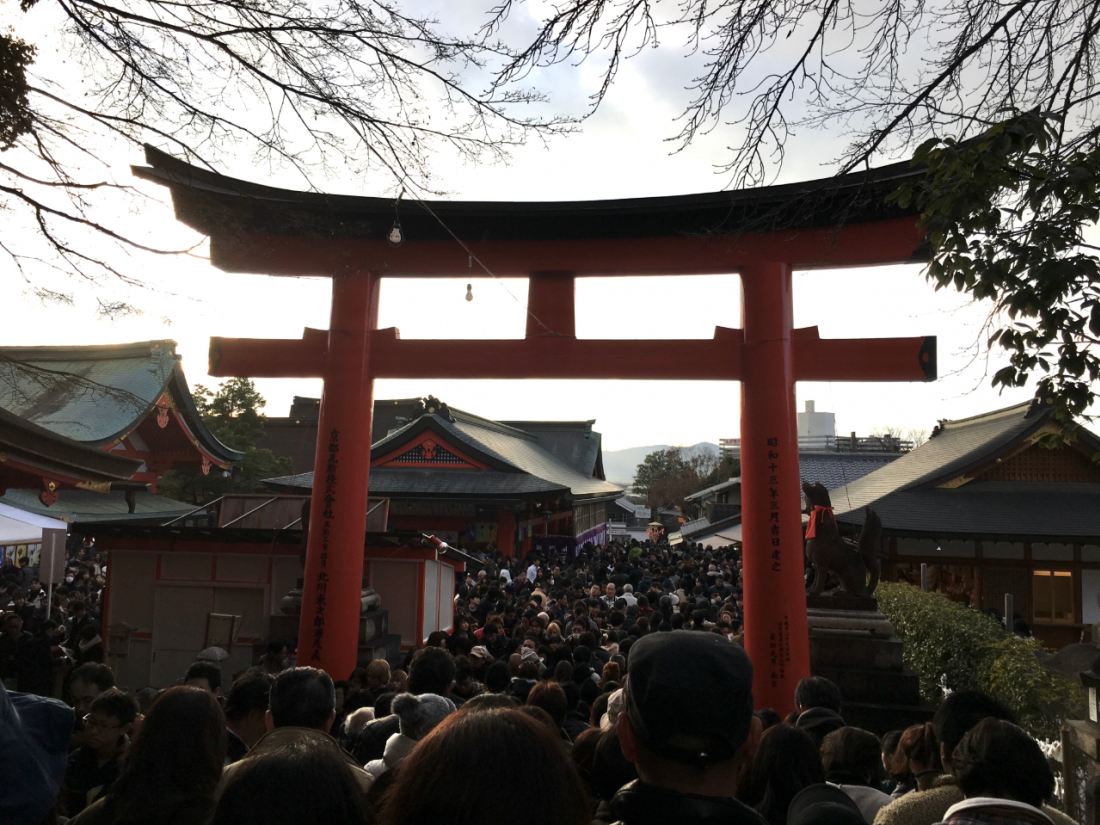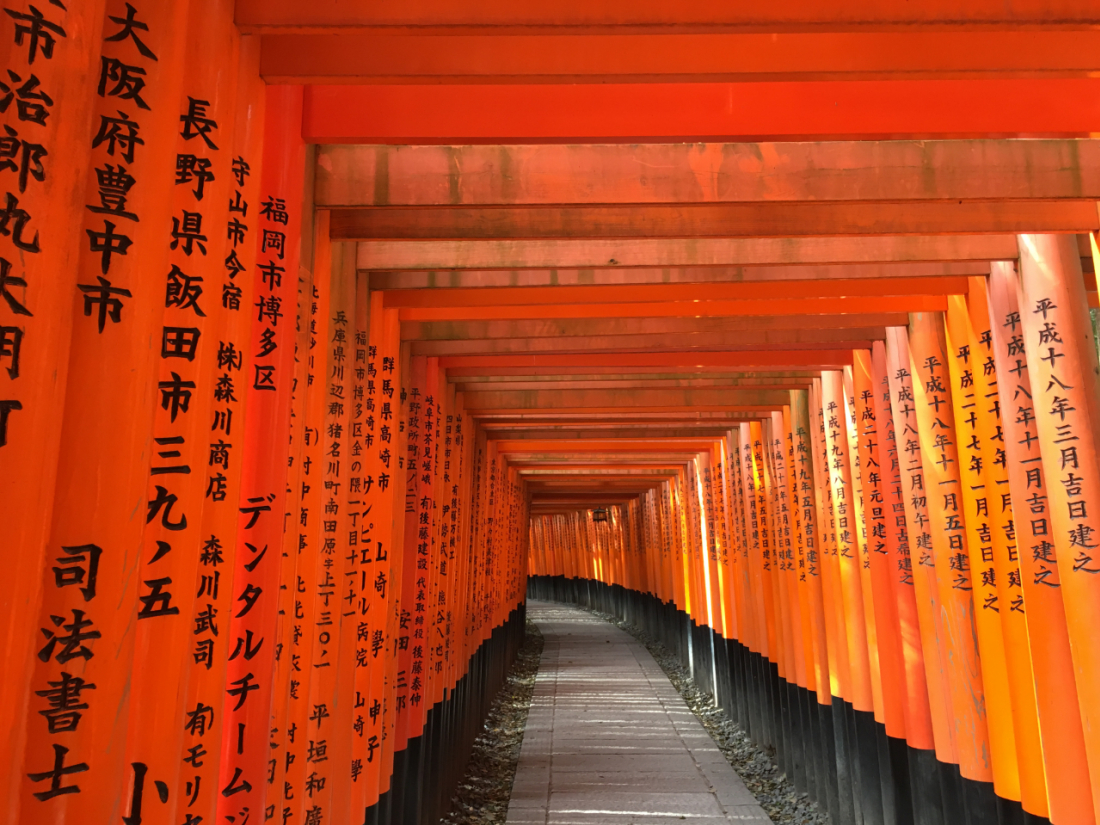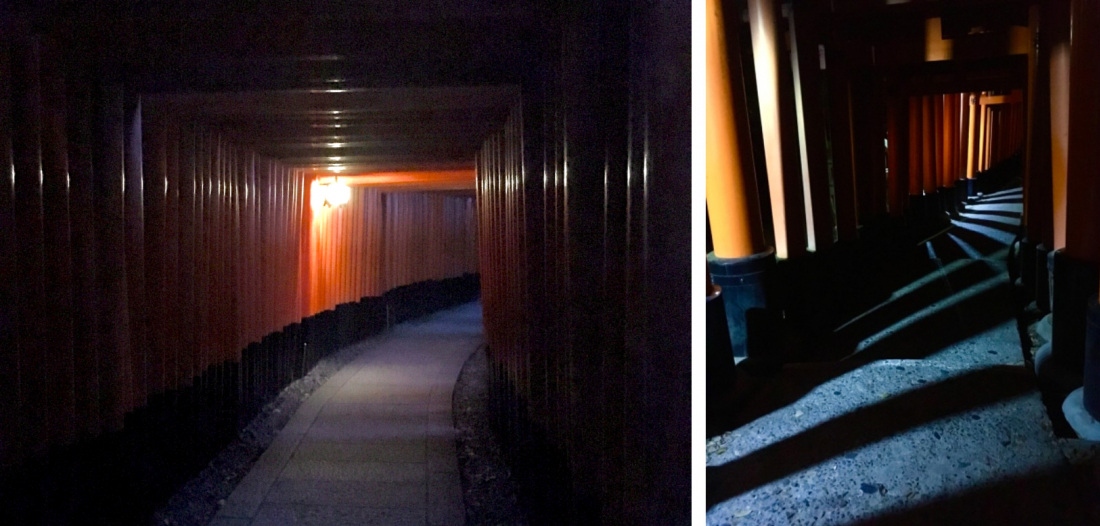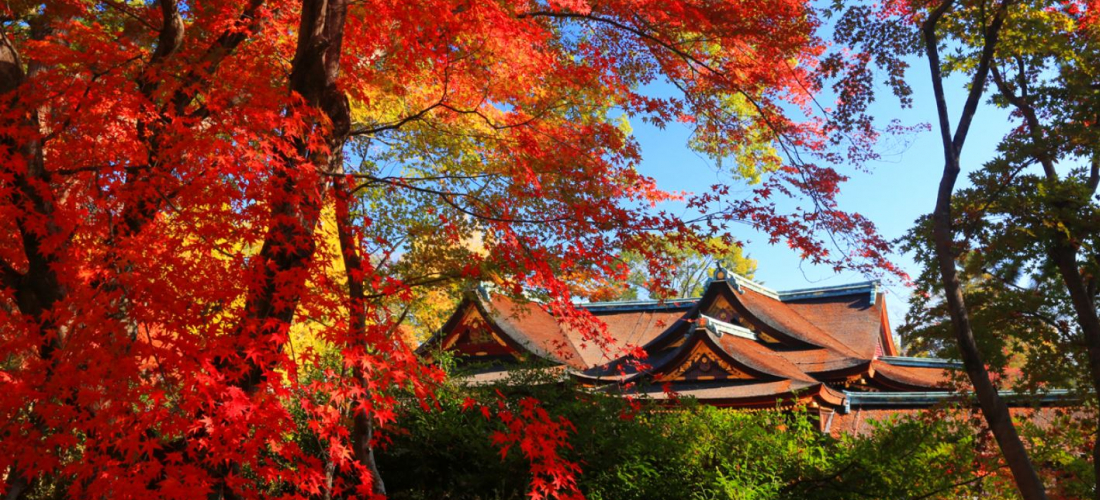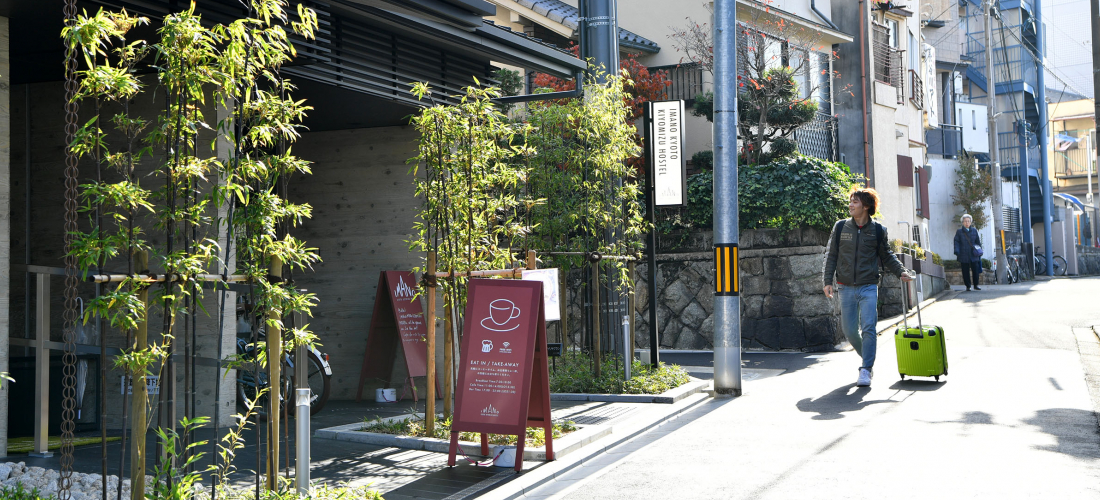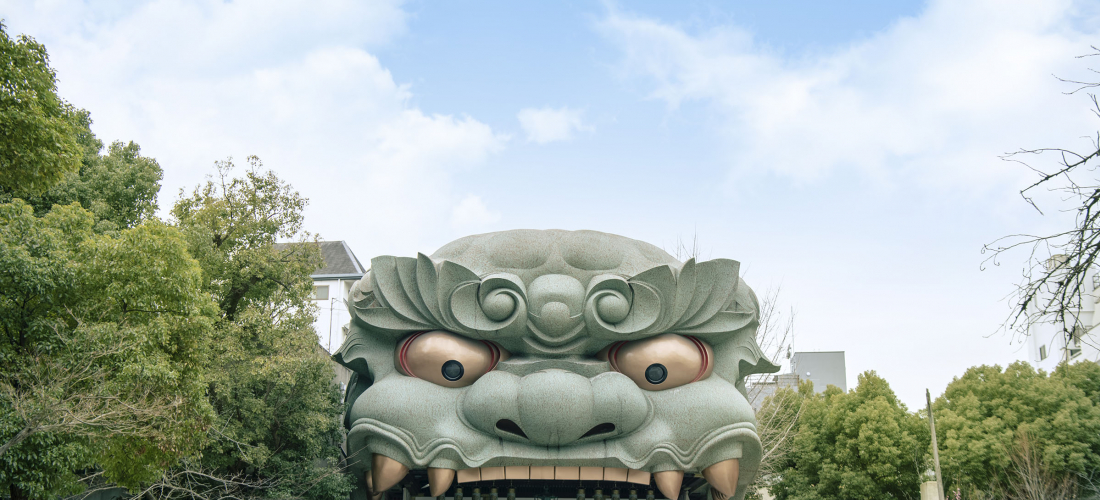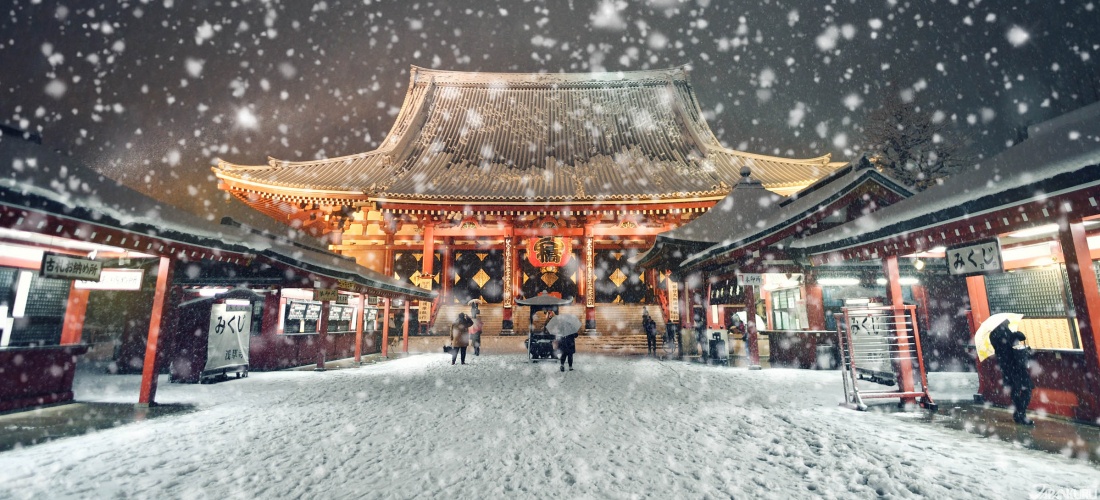
The Fushimi Inari Shrine of Kyoto, with its fame boosted by Hollywood’s Memoirs of a Geisha, is a busy, crowded attraction, making photography a challenge.
Tucked away in southern Kyoto, Fushimi Inari Shrine (called Fushimi Inari Taisha/伏見稲荷大社 in Japanese) became a major sightseeing destination in part thanks to the scene in 2005 Hollywood blockbuster Memoirs of a Geisha. However, with the number of tourists arriving in Kyoto steadily rising for years now (aside from an obvious drop due to COVID-19), there's no doubt that the shrine and its beautiful gates would have risen to popularity in one way or another by now, even without the help of its movie cameo. These days, the red shrine gates, or torii (鳥居) draw massive crowds throughout the year, making it hard to take pictures without including a few happy strangers taking center screen. So here are a few tips on how to take pictures of Fushimi Inari Shrine itself, and not the other visiting travelers.
In the end, catching a great shot of the shrine and the torii has a lot to do with luck. But a little advance planning can seriously increase your chances of arriving at a less crowded and less crazy shrine. Sakura (cherry blossom season) at the beginning of April, mid-summer, and peak koyo (autumn foliage viewing) season around November are all periods when tourists gather in Japan, which makes them less than ideal times for capturing the perfect snapshot. Of course, if you're a traveler taking a nice vacation to Japan, chances are pretty high that you're heading to Kyoto close to those seasons, too. The only time of year that you absolutely will not be able to catch a photo without other people is New Years. From January first to the middle of the month, Fushimi Inari is packed with locals and travelers alike, all there to celebrate "hatsumode" (初詣), the first shrine visit of the year. Photographing the crowds of hatsumode at the shrine can certainly be fascinating, but you're definitely not going to get any serene shots of the gates without people.
If you go on new year's morning, you can expect to wait 45 minutes or so in a neighboring parking lot before even getting onto shrine grounds, at which point you join a heaving mass of people like this.
Even if you end up visiting Japan at a more opportune time of year, the shrine will still get pretty crowded. For a picture of the most popular torii areas with golden afternoon shining through them, you can easily expect to wait half an hour or more for a chance to take pictures without some stranger off to the side, even on relatively empty days. For a less boring and stressful photoshoot, however, you might want to try arriving at Fushimi Inari Shrine either very early in the morning, or late in the evening.
As a Shinto shrine, the grounds basically don't close. Shrine keepers and priests are generally only around throughout normal business hours, so if you're hoping to pick up a charm or souvenir while you're there, then you do need to arrive around 9 to 5. But if your end goal is a good photo, get there around sunrise, or closer to sunset. There are far fewer visitors, and the dramatic lighting can make for some very cool views, anyway!
Most photos of Fushimi Inari Shrine focus on the Senbon Torii (千本鳥居), literally "the thousand shrine gates," which are neighboring paths lined with closely packed torii, fairly close to the entrance and main shrine hall of Fushimi Inari. They're the epitome of the shrine's image, gates painted bright vermillion and built so close together that you can barely slip a hand between them. They are always by far the most popular, and most crowded area of the shrine, because they are so very iconic.
But the Senbon Torii aren't the only beautiful part of the shrine. The map above depicts the entirety of the shrine grounds, and while it's easier to understand if you read Japanese, you don't need to read to see that the paths stretch high into the mountain. At the bottom of the map is the entrance to the shrine, and the Senbon Torii (the two rows of torii to the far right) aren't the only torii in the shrine.
The shrine really continues all the way up to the top of the mountain, and while the gates begin to stretch farther and farther apart in certain areas, there are plenty of beautiful spots to explore. Instead of dodging tourists down below, in the higher parts of the mountain you have a chance to concentrate on the contrast of the red gates and the greens and browns of the surrounding forest, plus the grey stone steps climbing the mountainside.
With a little bit of forethought, and a little luck, you'll find your own piece of tranquility at the beautiful Fushimi Inari Shrine, and get some great pictures to remember it by.
Got any other tips for a trip to Fushimi Inari? Taken any amazing snapshots at busy Japanese sightseeing hotspots? The Japankuru team would love to hear! Tell us all about it on twitter, instagram, and facebook!
Details
NAME:Fushimi Inari Shrine (伏見稲荷大社)
ACCESS:Inari Station, Fushimi-Inari Station
PROFILE
I came to Japan for a semester abroad, and I've been here ever since, so I guess I just can't get enough of the place. Tell me all the cool Japan-related things you know on instagram or twitter @japankuru !
COMMENT
FEATURED MEDIA
VIEW MORE
Narita Airport Tax-Free Shopping List 나리타공항 면세점 쇼핑 리스트 #pr #calbee #jagapokkuru #japanesesnacks #japanesefood #japanesesouvenir #japantravel #japantrip #naritaairport #hokkaido #나리타국제공항 #나리타공항면세점 #나리타공항면세점과자 #일본공항면세점 #일본기념품쇼핑리스트추천 #공항면세점쇼핑리스트 #일본과자추천 #면세점일본과자 #일본기념품추천 #일본과자 #자가폿쿠루 #일본간식 #일본과자쇼핑 #일본면세점필수템 #일본기념품쇼핑

Asakusa's Sanja Matsuri, one of the biggest festivals in all of Tokyo, is almost here! Make sure you check out the festival route so you don't miss all the festivities this May. #asakusa #sanjafestival #sanjamatsuri #asakusashrine #sensoji #sensojitemple #japanesefestival #shintoshrine #japaneseculture #tokyo #tokyotrip #tokyotravel #asakusasightseeing #matsuri #japantrip #japantravel #springinjapan #tokyotravel #japankuru #산자마츠리 #아사쿠사 #일본마츠리 #일본여행 #일본5월

Odaiba's DiverCity Tokyo Plaza is home to the famous real-size 20m-tall Unicorn Gundam, and the popular shopping center has even more Gundam on the inside! Check out the Gundam Base Tokyo on the 7th floor for shelves upon shelves of Gunpla, and the Gundam Base Tokyo Annex on the 2nd floor for cool anime merchandise. Both shops have tons of limited-edition items! #pr #odaiba #tokyo #tokyotrip #japantrip #japantravel #PR #divercity #divercitytokyoplaza #tokyoshopping #gundam #unicorngundam #gundambasetokyo #anime #otaku #gunpla #japankuru #오다이바 #다이바시티도쿄 #오다이바건담 #건담 #일본건담 #건프라 #건담베이스도쿄

Evangelion, in miniature!? Tokyo's SMALL WORLDS Miniature Museum is actually a must-see for anime lovers, thanks to the tiny Evangelion Hangar and Tokyo-III... plus a whole universe of other scenes both real and fictional. #smallworlds #smallworldstokyo #tokyotrip #tokyotravel #evangelion #eva #anime #miniature #miniatures #animefigure #japantrip #japantravel #에반게리온 #스몰월드 #에반겔리온 #スモールワールズ #오다이바 #아리아케

Have you sat down for a snack at Sumida Aquarium yet? This aquarium next to Tokyo Skytree is known for its penguins and garden eels, but we can't get enough of their cute snacks! There are lots of good seats around the aquarium, too, so it almost feels like one big cafe. 🐧 • Find out more at Japankuru.com! (Link in bio.) • #japankuru #sumidaaquarium #skytree #tokyoskytree #solamachi #sumida #tokyo #tokyotrip #tokyotravel #aquarium #japanesesweets #themecafe #すみだ水族館 #Japan #日本 #일본 #Japon #ญี่ปุ่น #Japão #япония #japantravel #日本旅行 #日本旅遊 #japan_of_insta #japantrip #traveljapan #japan🇯🇵 #igerstokyo #explorejapan

For anime fans, the Evangelion areas at Small Worlds Miniature Museum are a must see! The tiny miniature people in the Evangelion Hangar look like ants beneath the moving Unit-01, Unit-00, and Unit-02! And over in Tokyo-III, characters like Shinji, Rei, and Katsuragi live life on a miniature scale. #odaiba #tokyo #tokyotrip #japantrip #japantravel #ariake #smallworlds #miniaturemuseum #smallworldstokyo #tokyotravel #evangelion #eva #anime #miniature #miniatures #animefigure #japankuru #스몰월드 #에반게리온 #오다이바 #오다이바관광 #오다이바스몰월드 #미니어쳐

